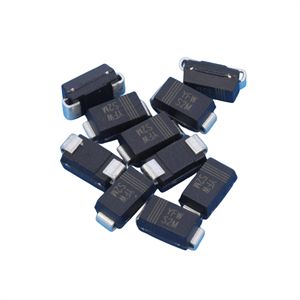Date:2024-10-11 Categories:Product knowledge Hits:318 From:Guangdong Youfeng Microelectronics Co., Ltd
Diode, also known as crystal diode, abbreviated as diode, and early vacuum electronic diode; It is an electronic device with unidirectional conduction current. There is a PN junction with two lead terminals inside the semiconductor diode, and this electronic device has the ability to transduce unidirectional current in the direction of the applied voltage. Generally speaking, a crystal diode is a p-n junction interface formed by sintering p-type and n-type semiconductors.
Space charge layers are formed on both sides of its interface, forming a self built electric field. When the applied voltage is equal to zero, the diffusion current caused by the concentration difference of charge carriers on both sides of the p-n junction and the drift current caused by the self built electric field are equal and in an electric equilibrium state, which is also the characteristic of diodes under normal conditions.
When a forward voltage is applied, at the beginning of the forward characteristic, the forward voltage is very small and not enough to overcome the blocking effect of the electric field inside the PN junction. The forward current is almost zero, and this section is called the dead zone. The forward voltage that cannot make the diode conduct is called the dead zone voltage. When the forward voltage exceeds the dead zone voltage, the electric field inside the PN junction is overcome, the diode conducts, and the current rapidly increases with the increase of voltage. Within the normal range of current usage, the terminal voltage of the diode remains almost constant during conduction, and this voltage is called the forward voltage of the diode.

Previous: Classification, Structure, and Principle of MOSFET
Next: Using voltage inspection method to quickly locate fault points in integrated circuits